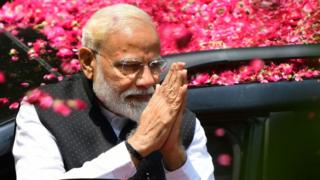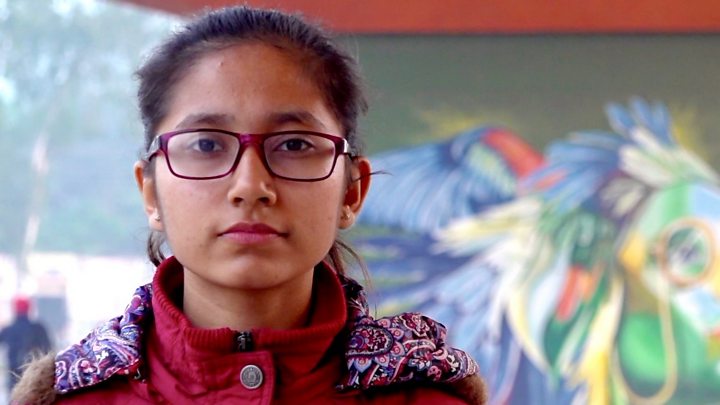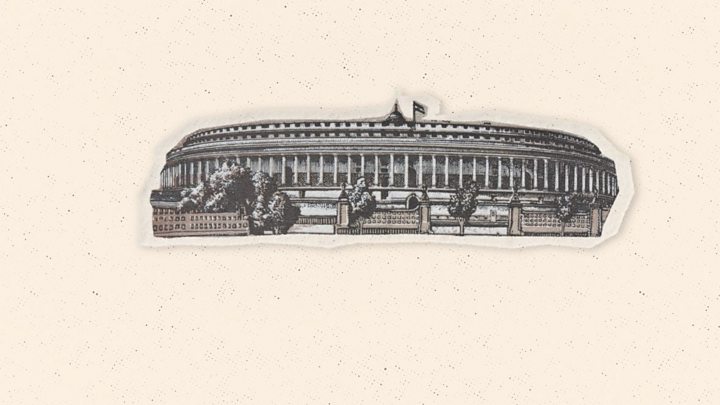 Image copyright
Image copyright
Getty Images
Prime Minister Narendra Modi’s Varanasi seat is up for grabs as Indians vote in the last phase of the general election.
Mr Modi’s Bharatiya Janata Party (BJP) and the main opposition Congress party are battling it out with powerful regional rivals in what analysts believe will be a close fight.
Many see this election as a referendum on Mr Modi who won a landslide in 2014.
Results will be announced on 23 May, drawing to an end six weeks of voting and a long, bruising campaign.
Sunday’s voting will take place in 59 seats, including Mr Modi’s constituency Varanasi, a holy Hindu city in the bellwether northern state of Uttar Pradesh.
Image copyright
Getty Images
Rahul Gandhi and his sister, Priyanka, belong to the fourth generation of the Nehru-Gandhi political dynasty
The BJP is hoping to repeat its 2014 performance when it won 282 seats, the biggest victory by any party in 30 years. The Congress, which won just 44, suffered its worst defeat.
A party needs at last 272 seats to claim a majority in the 543-member lower house of parliament, or Lok Sabha.
India votes 2019
Mr Modi, with his tough image, remains the BJP’s main vote-getter and is expected to hold his seat, which he won by a huge margin last time. But critics say his promises of economic growth and job creation have not met expectations, and India has become more religiously polarised under his leadership.
His main rival is Congress leader Rahul Gandhi, who is trying to win over an India weary of his family’s dynastic grip on politics. But the real kingmakers are expected to be powerful regional parties – if neither of the two main parties can win an outright majority.
What Indian voters are being promised
With 900 million eligible voters, this has been the largest election the world has ever seen. The fate of more than 8,000 candidates and some 670 political parties hangs on the ballot.
All eyes will be on the exit polls, which will be released by Indian media on Sunday evening after voting ends. But they have been known to be inaccurate, partly because of the size and complexity of the electorate.
What are the key issues?
The economy is perhaps the biggest issue, with farming in crisis, unemployment on the rise and growing fears that India is heading for a recession.
Image copyright
Getty Images
India has seen huge protests by farmers in recent years
Under Mr Modi, the world’s sixth-largest economy has lost some of its momentum. Growth hovers around 7% and a leaked government report claims the unemployment rate is the highest it has been since the 1970s.
A crop glut and declining commodity prices have led to stagnant farm incomes, leaving many farmers saddled with debt.
Many also see this election as a battle for India’s identity and the state of its minorities. A strident – and at times violent – Hindu nationalism has become mainstream in the past five years, with increased attacks against minorities, including the lynchings of dozens of Muslims accused of smuggling cows.

Media playback is unsupported on your device
And national security is in the spotlight after a suicide attack by a Pakistan-based militant group killed at least 40 paramilitary police in Indian-administered Kashmir in February. India then launched unprecedented air strikes in Pakistan, prompting Pakistan to respond in kind and bringing the two countries to the brink of war.
What to watch for
It’s often said that whoever wins Uttar Pradesh, wins the Indian election. The state sends 80 MPs – more than any other – to parliament. In 2014 the BJP won 71 of the state’s seats. But this time, a repeat performance seems far from certain.
In a surprising move, the Bahujan Samaj Party (BSP) and Samajwadi Party (SP) – bitter rivals – banded together to form a so-called “grand alliance” against Mr Modi. Together, they are likely to win more votes in the state and chip away at the BJP’s impressive 2014 seat tally.
So the ruling party is hoping to make up for these losses in states such as West Bengal, where it holds just two of the 42 parliamentary seats. Here, Mr Modi and the BJP are up against Chief Minister Mamata Banerjee – a contest that has produced some of the election’s fiercest exchanges.
Image copyright
Getty Images
Ms Banerjee has emerged as one of Mr Modi’s fieriest opponents
Four of India’s five southern states – Andhra Pradesh, Telangana, Tamil Nadu and Kerala – have long eluded the BJP. Of the 91 seats from these states, the BJP holds just four. The party contests few seats in this part of the country, relying instead on alliances with regional heavyweights.
If the BJP suffers heavy losses, the winning parties in these states could decide who forms the next government.
So who is likely to win?
Well, the BJP could retain its majority, even if it were to lose some seats and that would bring Mr Modi back for a second term.
Another scenario is a hung parliament, where no party has an overall majority. In that instance regional parties – almost all of which have not allied with either the BJP or Congress – will turn kingmakers, or possibly have a tilt at securing the top job themselves.
The Congress party’s chances of winning a majority appear slim. In 2014, the party was routed in Uttar Pradesh – a state once its stronghold and which has returned four generations of Mr Gandhi’s family.
And it has failed to stitch up a pre-poll alliance in crucial states in the east or the south – a sign of its waning influence.

Media playback is unsupported on your device
Modi on ballot as India wraps up election



0 Comments: